| Heliconius hecale zuleika |
| H. hecale is a large, relatively fast flying Heliconius. It prefers to lay its eggs on Passiflora vitifolia and other species in subgenus Passiflora such as P. ambigua and P. oerstedii. However, its larvae are capable of feeding on Decaloba species such as P. biflora and P. auriculata, and the females occasionally oviposit on these species. Most common in forest edge habitats and secondary forest. Range: Mexico to the Peruvian Amazon. |
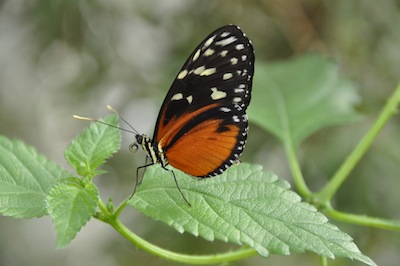 |
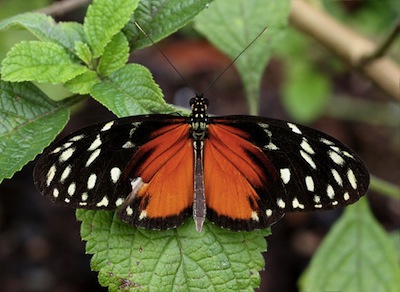 |
| |
|
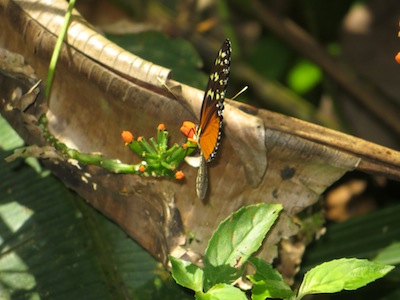 |
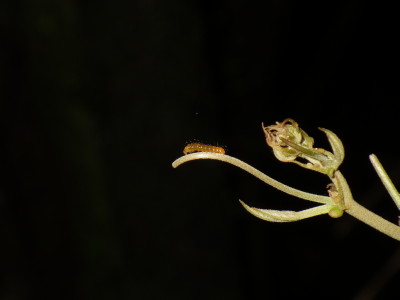 |
| Hecale adults are large. Like H. cydno and H. melpomene, they have a co-mimic in the erato-charithonia species group ("group II"), H. hecalesia (even the name is a mimic!). H. hecalesia is rare at La Selva, like its preferred host plant P. lancearea. |
Early-stage H. hecale larvae hatch from eggs laid on tendril or leaf tip. Eggs hatch in 4 days and the larvae feed on tendrils if available, where they are safer from ants. |
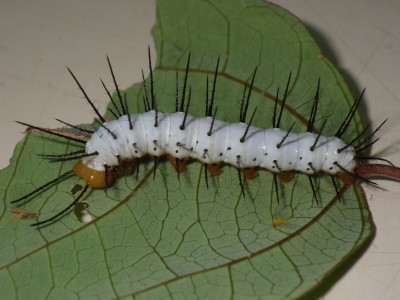 |
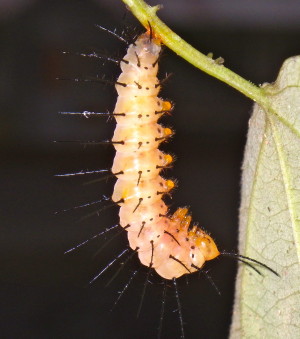 |
| 4th and 5th instar hecale larvae have only tiny black spots on their dorsal surface. H. cydno and H. melpomene larvae have many more spots. |
Pre-pupa. |
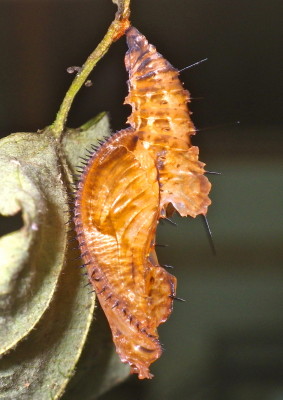 |
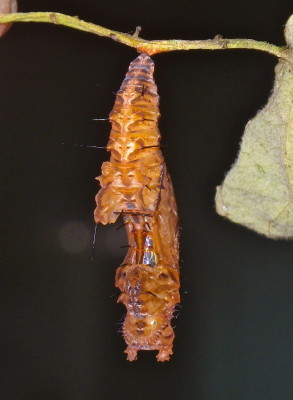 |
| Healthy pupa. |
|
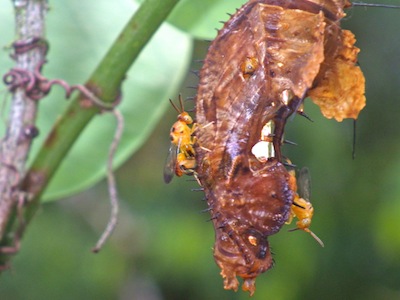 |
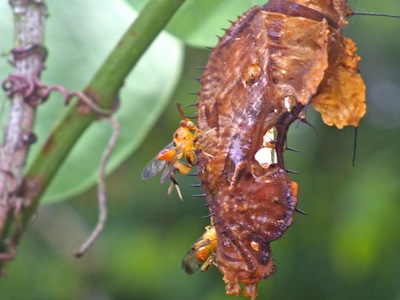 |
| Chalcidid parasitoid wasp after emergence from H. hecale pupa. Chalcididae hind legs are hugely swollen, both coxae and femora, and the tibia are curved to fit against the femora. In other chalcidids the modified hind legs serve a variety of purposes, including females fighting over hosts. |
You can see wasp heads inside exit holes on the pupal body. |
| |
|
| |
|
| |
|
| |
|
| |
|
| |
|
| |
|
| |
|